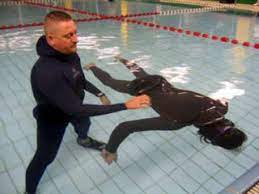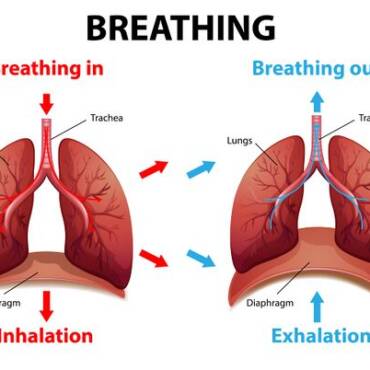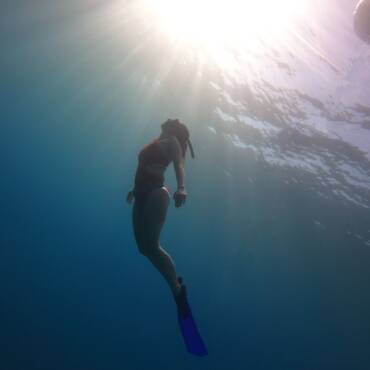Static apnea is a technique used by freedivers to enhance their breath-holding prowess.
Here’s how it works:
In static apnea, divers lie on the water’s surface, holding their breath without any movement.
The main objective is to stay relaxed while pushing the limits of their breath-holding endurance.
Beginners typically start with shorter breath-holds, gradually increasing duration as they gain confidence.
Training can be done in a pool or on dry land. If in the water, divers often float face-down and wear a wetsuit for comfort and buoyancy.
But it’s not just about breath-holding. Static apnea also serves as a mental exercise, teaching divers to remain composed, control their breathing, and even enhance diaphragm and lung flexibility – all of which are necessary for freediving.
If you’re looking to up your game in static apnea training for freediving, here are some pointers to keep in mind:
Start Small, Think Big: Begin with shorter breath-holds, typically around 20-30 seconds. As you gain confidence, gradually extend the duration.
Pool Perks: Practice static apnea in a pool. Consider wearing a wetsuit or similar thermal protection not only for warmth but also to help you float comfortably on the water’s surface.
Get Comfortable: If you’re doing dry training, find a comfortable sitting or slightly prone position rather than lying flat.
Breathe Right: Master proper breathing techniques. Take slow, relaxed breaths before and during the hold to conserve precious oxygen.
Recovery Routine: Always perform recovery breaths right after surfacing or ending your breath-hold, even after shorter attempts. This helps make recovery breaths second nature.
Still and Serene: While holding your breath, aim to stay as still and relaxed as possible. It’s all about finding your zen.
Buddy Up: Have a trained buddy or instructor with you for monitoring and support.
Consistency Counts: Regular practice is essential. Increase the length of your breath-hold gradually over time.
Mind Over Matter: Consider adding relaxation and mindfulness techniques to your training for enhanced focus and composure.
Safety First: Never forget safety protocols, and don’t push yourself beyond your limits. Take breaks and rest between sets – don’t overdo it.
Note: Image taken from Wikipedia.





Add Comment